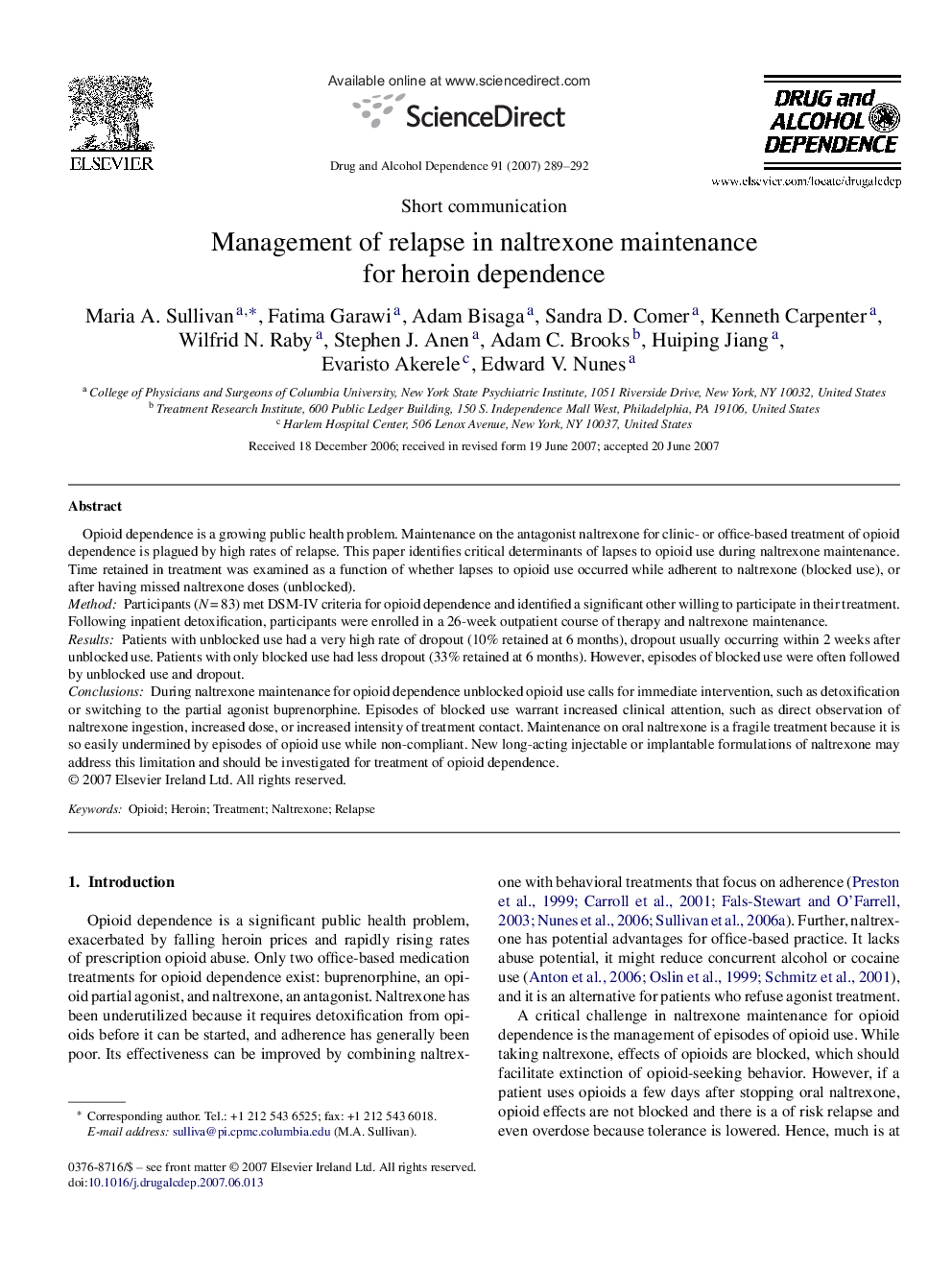| Article ID | Journal | Published Year | Pages | File Type |
|---|---|---|---|---|
| 1071186 | Drug and Alcohol Dependence | 2007 | 4 Pages |
Opioid dependence is a growing public health problem. Maintenance on the antagonist naltrexone for clinic- or office-based treatment of opioid dependence is plagued by high rates of relapse. This paper identifies critical determinants of lapses to opioid use during naltrexone maintenance. Time retained in treatment was examined as a function of whether lapses to opioid use occurred while adherent to naltrexone (blocked use), or after having missed naltrexone doses (unblocked).MethodParticipants (N = 83) met DSM-IV criteria for opioid dependence and identified a significant other willing to participate in their treatment. Following inpatient detoxification, participants were enrolled in a 26-week outpatient course of therapy and naltrexone maintenance.ResultsPatients with unblocked use had a very high rate of dropout (10% retained at 6 months), dropout usually occurring within 2 weeks after unblocked use. Patients with only blocked use had less dropout (33% retained at 6 months). However, episodes of blocked use were often followed by unblocked use and dropout.ConclusionsDuring naltrexone maintenance for opioid dependence unblocked opioid use calls for immediate intervention, such as detoxification or switching to the partial agonist buprenorphine. Episodes of blocked use warrant increased clinical attention, such as direct observation of naltrexone ingestion, increased dose, or increased intensity of treatment contact. Maintenance on oral naltrexone is a fragile treatment because it is so easily undermined by episodes of opioid use while non-compliant. New long-acting injectable or implantable formulations of naltrexone may address this limitation and should be investigated for treatment of opioid dependence.
